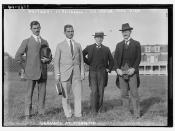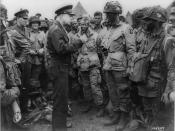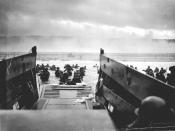d-day
In 1943, General Dwight D. Eisenhower was given supreme command over the planned invasion by Allied forces into German held France. The code name given to the plan was Operation Overlord and the invasion began about 12:15 A.M. on June 6, 1944. This day would be forever remembered as D-Day. Getting to it though had been a long, hard road for all who traveled it.
There had been much discussion as to where the invasionary forces should land. Pas de Calais and Normandy were the two possible choices but since Calais was the heavier fortified of the two, Normandy became the final destination. In so choosing Normandy, the objective became seizing the city Cherbourg and to continue until seizing Nantes.
German Fortifications were not the only factor that had to be considered for the invasion. The English Channel was often rough, and such things as tides, winds and even the moonlight had to be taken into account.
Since it was an amphibious landing special types of crafts and equipment had to be designed and built.
Just after midnight on June 6th, 23,500 American and British paratroopers and gliders landed behind the German coastal emplacements. In all, 1,200 transport planes and 700 gliders would be used.
A little after daybreak on the same day, 4,000 transports, 800 warships, and an unknown number of smaller boats arrived at the beaches of Normandy with the troops of the U.S. 1st Army and British 2nd. Arm. The commander for this landing would be Field Marshal B.L. Montgomery.
Sword Beach was the eastern most landing site. It was the defended by the Merville Battery and the expected casualties were eighty-four percent. The 22nd Dragoon Guards were a Scottish Unit and the first to land. Supported by five mine sweeping tanks and the 1st Special...


